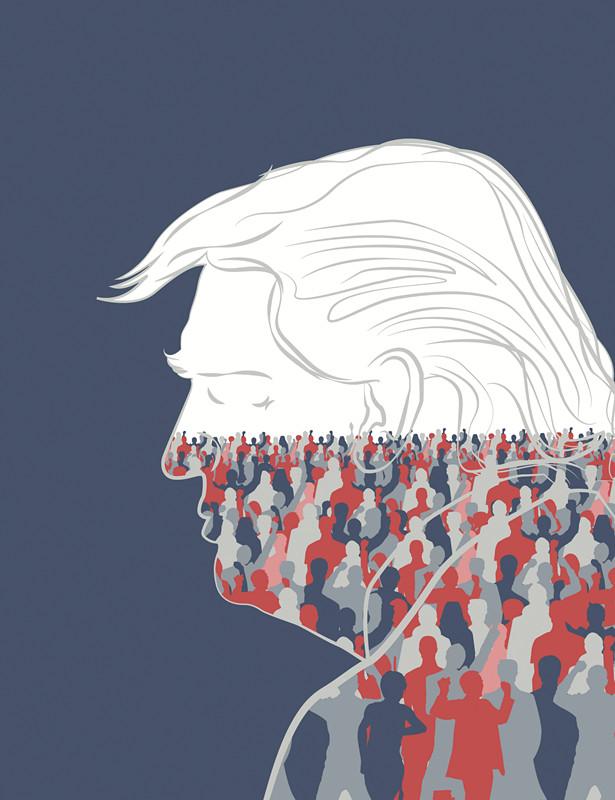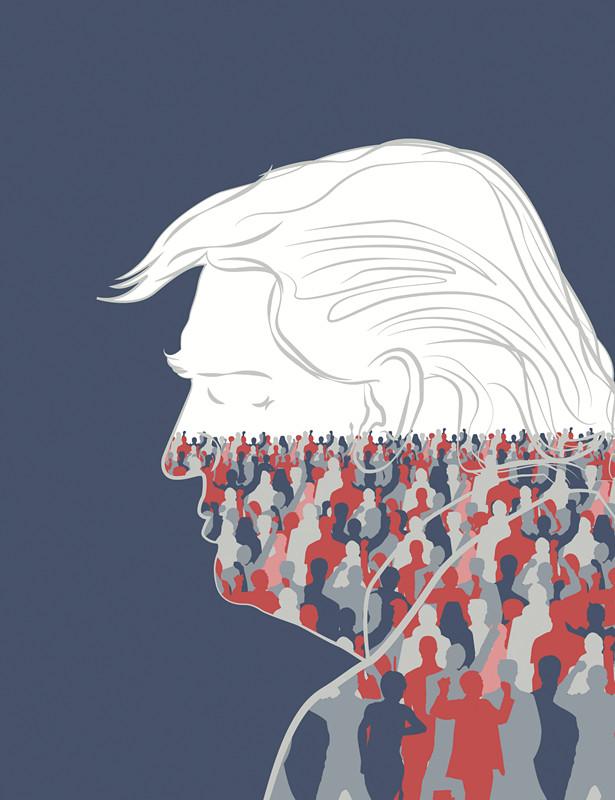After US President Donald Trump endorsed the ‘One China’ doctrine in his phone call with Chinese
President Xi Jinping, following his shock phone call with Taipei, alarm bells may have stopped ringing,
but relations remain tense and uncertain
A phone call between Donald Trump and Taiwanese leader Tsai Ing-Wen in early December 2016 led to serious concerns about the Sino-US relationship. Trump followed by openly questioning the “Once China” policy, which Beijing has repeatedly stressed is the “political foundation” of the bilateral relationship.
Then on February 9, three weeks after his inauguration, President Trump appeared to have made a U-turn over the issue. In a phone call with Chinese President Xi Jinping, he told Xi that the US would honor its long-standing One China policy. According to a readout of the conversation released by the White House, the call was “extremely cordial” and the two leaders discussed “numerous topics.”
The phone call is the first with Xi since Trump’s inauguration. Prior to the phone call, Trump sent Xi a letter offering greetings to the Chinese people for the Lunar New Year Holiday. The two leaders had previously spoken on November 14, last year, when Xi congratulated Trump on his victory in the 2016 US presidential election.
The phone call also seemed to have paved the way for the first highlevel talks between the two countries since the election of Donald Trump. On February 17, Chinese Foreign Minister Wang Yi and US Secretary of State Rex Tillerson met at the sidelines of the G20 ministers meeting held in Bonn, Germany.
Trump’s change of mind over the One China policy led to mixed responses. Many in the US media acknowledged that Trump’s backing down from his threat to abandon the One China principle might help the US to avert a serious confrontation with China, but they described his flip-flopping over the issue as a diplomatic failure.
A February 10 report in the New York Times, for instance, noted that analysts said that Trump has “handed China a victory” and allowed Beijing to have “the upper hand” in the bilateral relationship.
For China, Trump’s call with Xi was welcomed. It has been a fundamental policy for Beijing to refuse to maintain diplomatic ties with any state that recognizes Taipei. If Trump refused to affirm the One China policy, Beijing would have no choice but to end its formal diplomatic ties with the US to maintain the credibility of its will to maintain the policy.
Few in China hailed it as a victory, though. Instead, caution was the watchword. An editorial by the China Daily, the official English-language state newspaper merely called it the “right decision.” The Global Times, a state-run nationalist tabloid lauded the decision in an editorial, saying that it “injects some certainty” to the bilateral relationship and will help to bring the relationship “back to track.”
But many analysts argue that the risks posed by Trump’s questioning the status of Taiwan is far from over. For example, a February 18 op ed in the Hong Kong-based South China Morning Post entitled “Trump’s One China affirmation should fool no one – especially China,” warned that Trump’s new position “means nothing as long as the administration forges ahead with stronger relations with Taiwan.”
Such concerns are not unfounded. After all, Trump’s reaffirmation of the One China policy appears to be only half-hearted at best. His language on the issue barely straddles China’s bottommost line on the One China policy. The brief White House readout of the conversation
between Trump and Xi made it clear that his endorsement of the policy was only made “at the request of President Xi.”
Trump’s administration still features a number of senior advisers,
such as Michael Pillsbury and Peter Navarro, with long-held hawkish
attitudes toward Beijing and strong ties to the “Taiwan lobby” in
Washington.
Moreover, although both the US and China adhere to the One China principle, they define it in different ways – leaving ample room for diplomatic maneuver. Trump’s call also will not undo that fact that former US president Barack Obama signed into law in late December 2016 the 2017 National Defense Authorization Act, which calls on the Pentagon to conduct senior military exchanges between Taiwan and the US – measures the Trump administration is likely to follow
up on.
Just one week after Trump’s call with Xi, Stephen Young, the former director of the American Institute in Taiwan (AIT), which serves as the de facto US embassy in Taiwan, said in a US policy seminar held in Washington that the US Marines will stand guard at the new AIT complex as a “symbolic expression of the US commitment to Taiwan.”
It is routine for the US to send the Marine Corps to provide security for embassies and consulates. However, as Washington only maintains an unofficial relationship, an arrangement in line with the One China principle, no Marines have been stationed at the AIT, which is officially a non-governmental organization.
Stationing marines at the AIT, a practice in line with embassies of the US around the globe, would be a major symbolic move in boosting US-Taiwan ties. Neither the US State Department nor China’s Foreign Ministry have responded directly to the reports.
Many believe that despite Trump’s new tone on the One China policy, the Taiwan issue may continue to serve as a bargaining chip for the US in its negotiations with China.
The bargaining process may have already started. During the meeting between Chinese Foreign Minister Wang Yi and his counterpart Rex Tillerson, Wang re-emphasized the importance of the One China policy for the bilateral relationship. By contrast, the issue was not mentioned in the meeting’s readout released by the US State Department.
Instead, Tillerson raised the need to “create a level playing field for trade and investment, according to the State Department readout. The alleged unfairness of China’s trade policies is a long-term theme of Trump’s accusation against China.
Other than trade issues, Tillerson also urged China to “use all available tools to moderate North Korea’s destabilizing behavior.” In the past few months, Trump has repeatedly criticized China, which he said “has total control over North Korea,” for failing to rein in Pyongyang. Earlier, on February 12, two days after Trump’s inauguration, North Korea fired a ballistic missile into the Sea of Japan, which has drawn a new round of international condemnation.
Then on February 18, the day after Wang and Tillerson’s meeting, China’s Commerce Ministry announced that China would suspend all imports of coal from North Korea giving it from February 19 to the end of 2017 to implement UN Resolution 2321, which specifically lists coal, iron, and iron ore as sanctioned commodities in the pursuit of North Korea’s denuclearization.
It is estimated that coal exports to China account for 40 percent of North Korea’s foreign currency earnings. China’s latest decision is considered the most powerful sanction by far and an unprecedented one.
Although neither side has made an official link between Beijing’s decision and the meeting between Wang and Tillerson, some analysts believe that the move could be a compromise made by China under pressure from the Trump administration. If that is the case, Trump’s strategy may appear to be paying off.
As China shares with the US a common goal of denuclearization of the Korean Peninsula and the Chinese public is becoming increasingly intolerant of North Korea’s provocations, it may be acceptable to Beijing to make a compromise on the North Korean issue. But it remains inconceivable that China will make major concessions on other key issues where the two countries are in dispute, such as the South China Sea issue.
During his confirmation hearings, Tillerson threatened to block China’s access to those contested islands. Tillerson later toned down his rhetoric over the issue. But on February 12, days after the phone call between Trump and Xi, the Navy Times reported that Trump has approved plans to send the Carl Vinson carrier strike group to sail within 12 nautical miles of islands under Chinese control in the Spratly and/or Paracel Islands in the South China Sea, known as the Xisha and Nansha Islands in Chinese.
Under the Obama Administration, the US had previously sent destroyers to conduct the “freedom of navigation operations,” also known as FONOPS. But it has not sent a carrier strike group to do so, which if conducted could considerably escalate the level of confrontation between the two militaries.
China offered a tough response. On February 13, one day after the report, China’s Defense Ministry announced that a task force of naval battleships had left Sanya, in China’s Hainan Province, to conduct “confrontation drills” in the South China Sea that would involve the
aviation forces of its navy’s South Sea Fleet and garrison troops in the Xisha/Paracel Islands and the Nansha/Spratly Islands. State media also released footage of China’s Su-30 jet fighters patrolling the Xisha/ Paracel Islands.
Despite Trump and his administration’s softer rhetoric on China, the future relationship between the two countries remains uncertain, and experts differ on the direction and prospect of the bilateral relationship.
For optimists, the Trump administration will be constrained by the existing framework of the US-China relations, and will pose no greater risk than previous US administrations. Chen Xiaolin, a professor
at the Beijing Foreign Studies University, for example, argued
that Trump’s reaffirmation of the One China policy and sending ships
to the South China Sea means a return to the US traditional policy
towards China and will continue the “pivot to Asia policy” under the
Obama administration.
An editorial released by the Global Times on February 18 claimed that Trump will eventually realize that he “does not have more leverage against China than Barack Obama,” and that “restraining factors that prevent the two countries from having a clash” will grow over time.
Other analysts, though, depict a more dire picture of the future bilateral relationship between the two countries. A lengthy editorial released by China.com.cn warned that Trump’s “new pragmatism” in the Western Pacific can be understood as “offensive realism,” which could lead a chain effect of “action-reaction” cycles between the US and China, eventually triggering an armed conflict.
The argument was partially shared by the SCMP editorial of February 18. “Trump’s new, softer tone does not mean the combative leader has reconsidered his previous approach to be risky or counterproductive,” wrote author Cary Huang, a senior China affairs columnist with the SCMP.
“At issue is the unavoidable conflict between the two leaders’ ambitiously nationalistic agendas – Xi’s ‘China Dream’ and Trump’s campaign promise to ‘Make America Great Again,’” Huan added.
Euan Graham, Director of the International Security Program at the Lowy Institute, argued in an article released on the Lowy Institute’s influential blog The Interpreter, that it is a deliberate strategy for the Trump administration to inject uncertainty about US strategic intentions in Asia, and towards China especially.
Stressing that “the deliberate unpredictability of the Trump Administration about US intentions injects an insidious risk into regional security,” Graham warned that the risk-prone approach could easily lead to misconceptions and trigger conflicts in the region.
As the guesswork over the intention and strategy of the Trump administration continues, uncertainty is set to become the norm for the relationship between the world’s two largest economies in the coming years.?

 Old Version
Old Version
